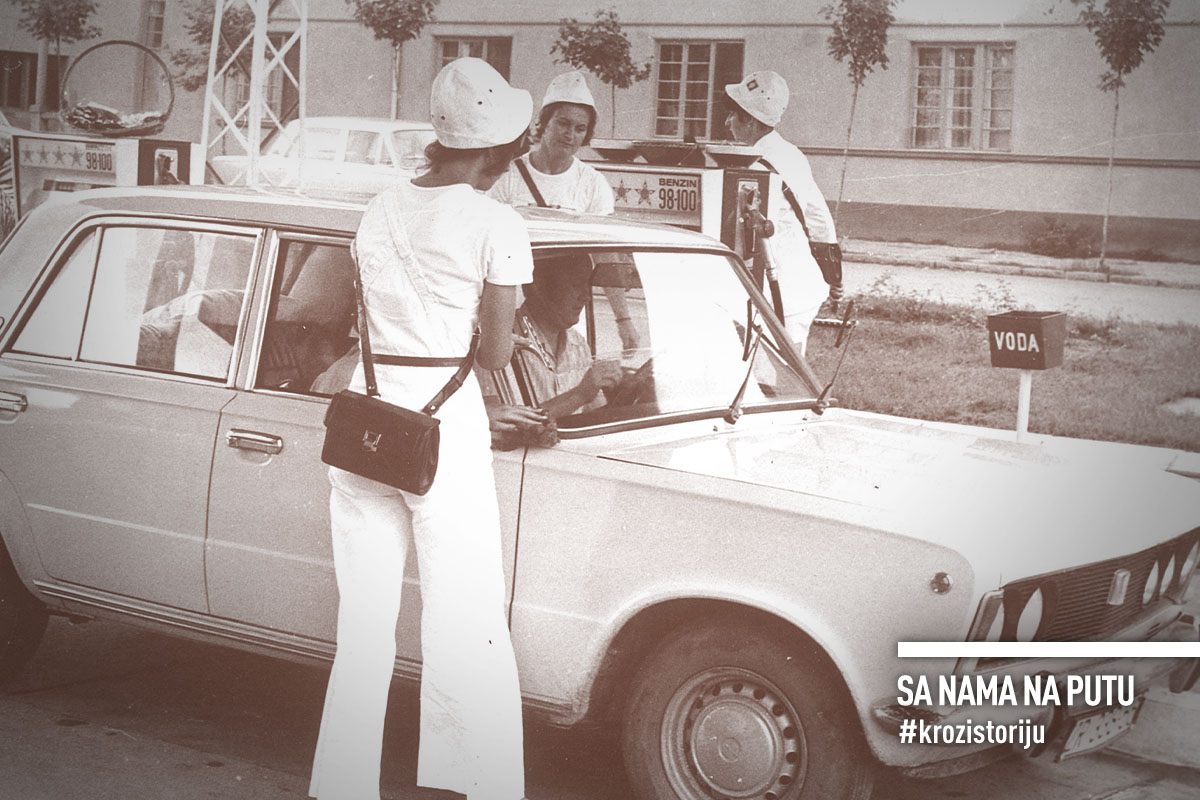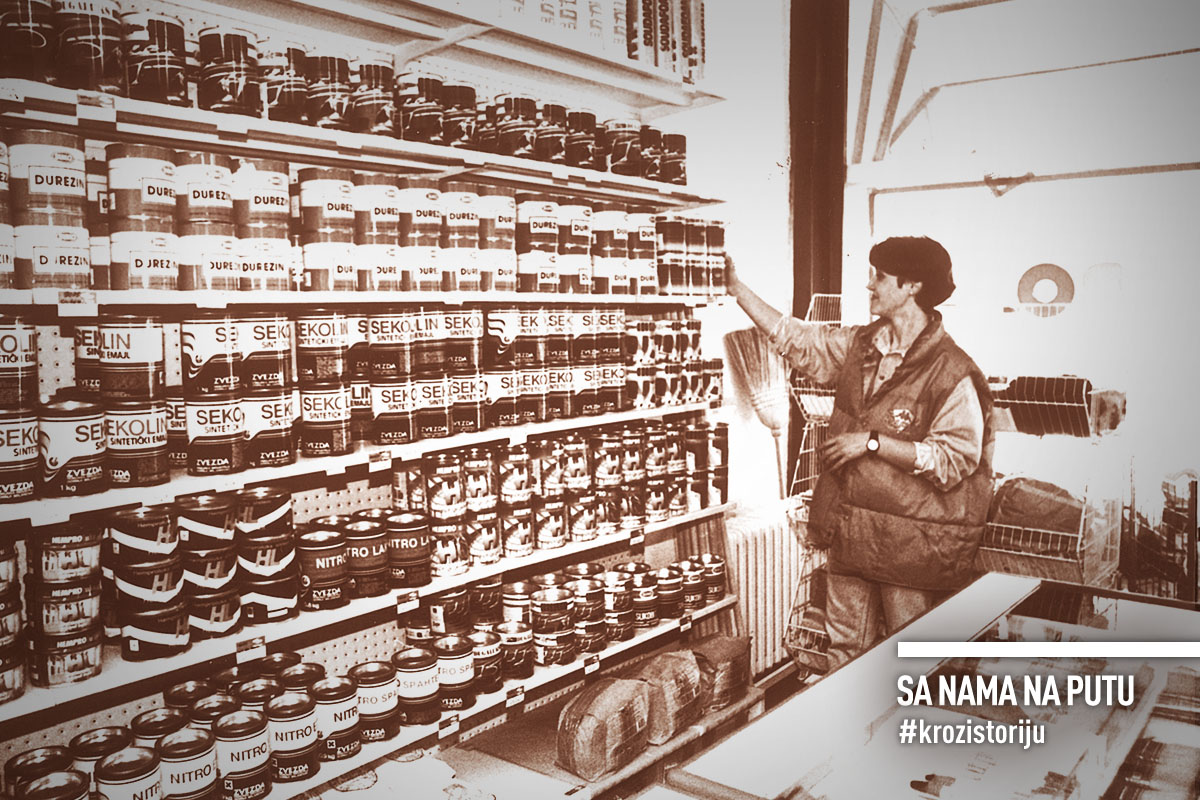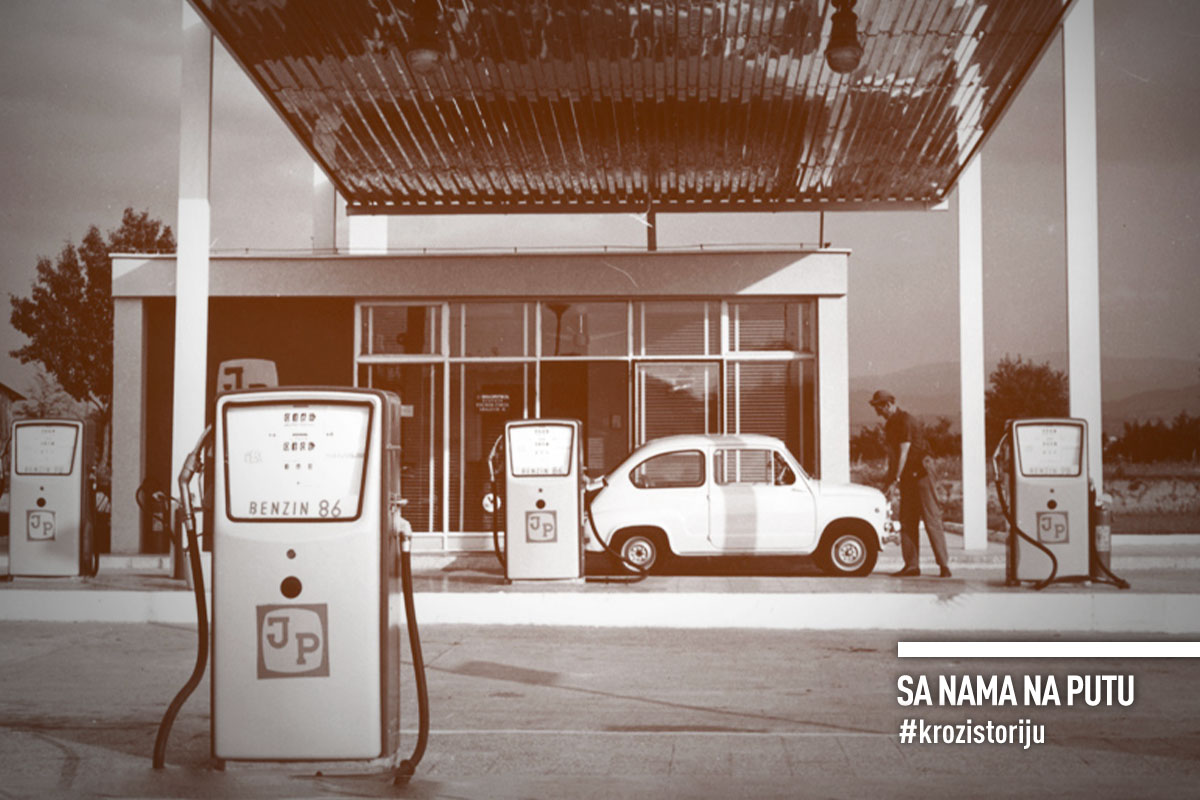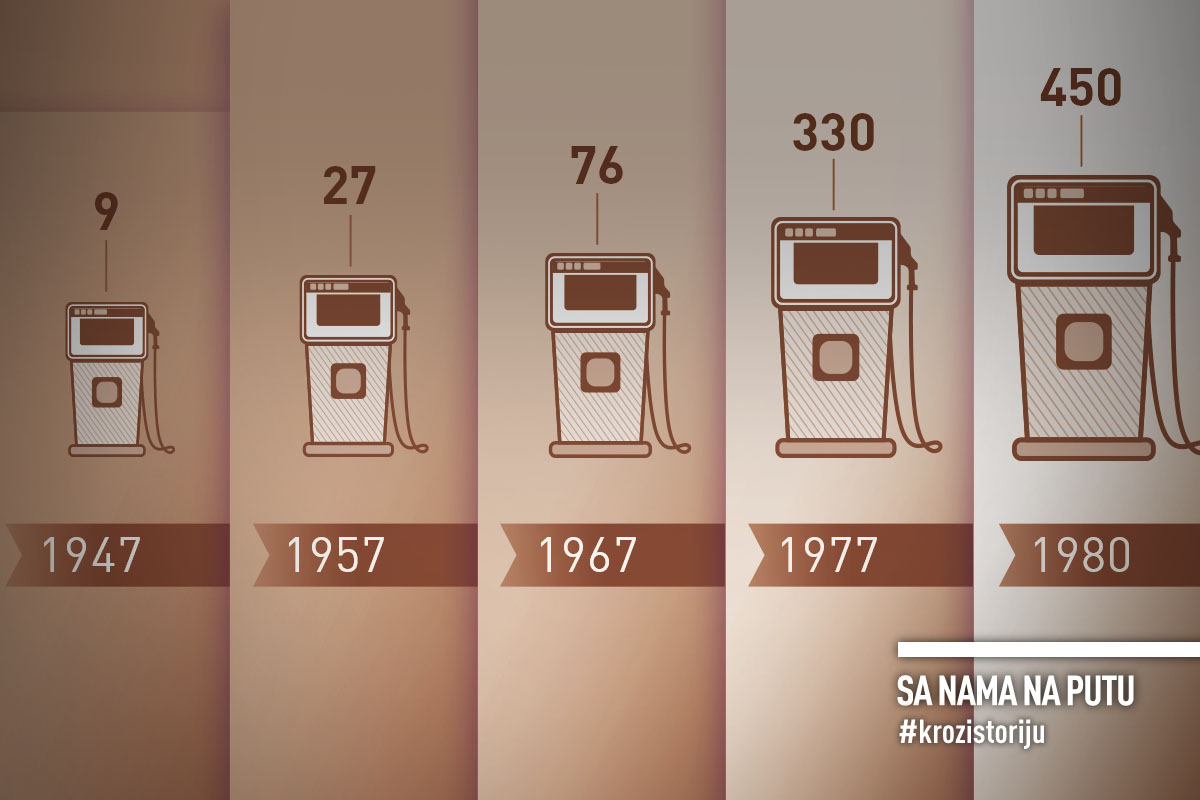Cars and petrol stations are so widespread today that it is difficult for us to imagine that there was a time when only the wealthiest could afford these means of transport, and that even for them it was almost impossible to find petroleum products. However, all of this was everyday life at the beginning of the 20th century, and around that time, the story of petrol stations in Serbia began.
This is how it happened…

From pharmacies to ship pumping stations
Trade in petroleum products in Serbia can be traced back to the last decades of the 19th century. At first it was about kerosene, which came to our region from nearby Romania and was mainly used for lighting. However, these were rather small quantities mainly consumed in larger cities.
Belgrade’s history remembers 03 April 1903 as an important date. On that day, Serbia’s capital between the Danube and the Sava rivers got its first car. Its brand was “Nesselsdorf”, type B, and was bought by Boža Radulović, a rich man from the capital. Not only for this gentleman and for the Serbian capital, that day was also significant for the history of the oil industry. Namely, in order to drive their expensive four-wheelers, Boža needed gasoline, just like all subsequent car owners. It was the new driving force of an entire industry.

The first days saw many problems. Gasoline could only be obtained in pharmacies, was quite expensive, had questionable quality and was sold in small quantities. Thus, the owners of the first Serbian cars were forced to spend a lot of time (and money!) visiting pharmacies and collecting petrol to fill the tank of their expensive “pet”.
However, in small steps, the development continued… With an increasing number of cars, the demand for petrol also grew, which also led to a new shift in the oil industry development. After the First World War, the first petrol station was set up near the “Topola” tavern, at the corner of Kralja Aleksandra and Dečanska streets.
Today’s users, quite used to modern petrol stations offering a wide range of petroleum products and other car supplies, could hardly imagine what these first petrol stations looked like. Basically, they were – just pumping stations! There was a pole with installed ship pump, barrel and the filler, pumping gasoline from it, measuring and pouring it into the car’s tank with a hose.
The whole process was long and arduous, but even this was a step forward. The number of places where it was possible to buy gasoline was constantly growing. The “market competition” between different suppliers began, and we have very scarce statistical information from the decade just before the beginning of World War II. In 1939, there were 156 public petrol stations operating in the Kingdom of Yugoslavia, and the market consumed about 300 thousand tons of oil and petroleum products.

From ship pumping stations to the first modern petrol stations
The real development of Serbia’s petroleum industry began after the Second World War, proverbially, so to say, from a very bad situation. A modest distribution network of stations and small sales, the four-year devastation inflicted a huge blow. In Serbia alone, about 85 percent of the facilities used for storing and selling petroleum products were destroyed, and only nine petrol stations remained operational, all of them located in Belgrade.
Therefore, the first task of “Jugopetrol Belgrade” (oil and petroleum products sales company founded in 1945) and “Naftagas” (oil exploration and production company founded in 1949) was to push the market. Supply of the economy was organized, the existing distribution network was modernized, investments were made to build a new one, and after oil was discovered in Vojvodina in 1952, the development of the national petroleum industry entered a new, serious and commerce-oriented phase. The largest distribution network of petrol stations in Serbia, today integrating NIS Petrol and Gazprom, would also emerge from this phase in the decades to follow.
If we go back in time for a moment, we will also see that the increase in the number of petrol stations across the country speaks of the development of retail – in 1957 there were 27 (11 in Belgrade and 16 outside Belgrade), while in 1967 this number rose to 76, and in 1977 to 330! From the middle of the last century, an increase in the number of cars was followed by opening first modern petrol stations – some of the first and most famous in the capital were “Železnička”, “Cukarica”, “Zeleni venac”…

Besides gasoline and diesel, drivers could also buy lighting kerosene, motor and machine oils there. Over time, the offer expanded to include consumer goods, as well as other car-related services: windshield washing, checking and replacing engine oil, measuring tire pressure…
Petrol stations thus began to look like the ones we see nowadays.
To be continued…
Author of the text: Aleksandra Bogdanović „Istorijski zabavnik“

